Bowdens Caldera a seismic shift for Silver Mines

Pic: busypix / E+ / Getty Images
Seismic data from Silver Mines’ Bowdens project has further confirmed its strong potential to be a globally significant open pit and underground operation, with the identification of the “Bowdens Caldera”.
As Silver Mines’ (ASX:SVL) open cut project nears the final development approvals finish line, seismic data has identified significant new drill targets below and in proximity to the existing Ore Reserve’s base.
Bowdens is already the largest undeveloped silver deposit in Australia and one of the largest in the world, with outstanding prospects for future mine development across some 2,000 km2 of 100% held titles.
Recent drilling results from the Bundarra Zone beneath the Bowdens open pit have included an unbelievable 1,769 grams per tonne (g/t) silver equivalent. Step-out drilling has additionally revealed a much greater presence of gold and zinc, including visible gold.
MD Anthony McClure said: “The seismic data returned from the 12.4km line of surveying is extremely positive and vastly improves our geological understanding of the Bowdens Deposit by highlighting a major caldera ring fault and clearly defined potential system extensions.”
“It confirms our belief that it has the potential to be an operation that’s likely to be in development in 50 years.
“This new data not only enables us to quickly target other mineralised systems close to Bowdens, but also regionally across our tenure package in central west NSW.
McClure added that, “In addition to the current aggressive drilling program further targeting of the newly identified priority drill targets will be undertaken, including those about only 900m from the Bowdens Silver Deposit.”
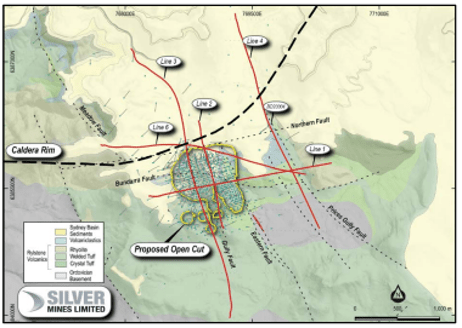
Caldera class
A caldera is a large cauldron-like hollow that forms after a volcanic eruption, when support for the rock above the magma chamber collapses.
From an exploration perspective, the hydrothermal fluids responsible for metal deposition, fill the major structures formed as volcanoes erupt then collapse.
The most prospective areas are along the caldera edge where major ring faults have formed and fluids have been able to flow and cool, depositing mineralisation.
These faults can be the key driver of fluid migration in deposits such as the prolific Round Mountain Gold Deposit in Nevada and the Banská Hodruša Gold Deposit in Slovakia.
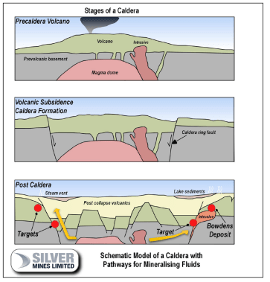
The Bowdens Caldera and new targets
Three target types have been identified, which include system extensions and steep “ring fault” hosted targets such as two high priority targets in Prices Gully less than a kilometre east of the Bowdens Deposit. Significantly, the reflectance properties of these targets are of equal size and amplitude as those of the Bowdens Deposit.
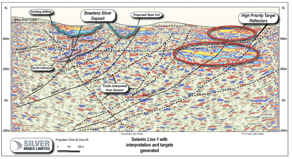
The largest targets are on seismic lines 3 and 4 north of the Bowdens Deposit.
All these targets are interpreted as an extensive and deep fault formed by caldera collapse, known as a ring fault.
At Bowdens, the ring fault, connects to the northern fault at depth and this is where the greatest displacement can be seen, marking the southern boundary of a large volcanic centre, or caldera.
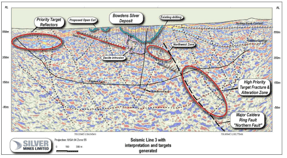
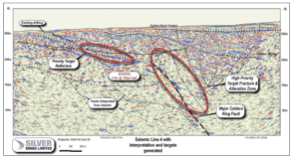
The 2-million-tonne-per-annum open pit operation, now in the final stages of development approval, would have an initial mine life of 16.5 years producing about 66 million ounces of silver, 130,000 tonnes of zinc and 95,000 tonnes of lead.
Meanwhile the company is in the process of delivering a maiden underground Mineral Resource.
This article was developed in collaboration with Silver Mines, a Stockhead advertiser at the time of publishing.
This article does not constitute financial product advice. You should consider obtaining independent advice before making any financial decisions.
Related Topics

UNLOCK INSIGHTS
Discover the untold stories of emerging ASX stocks.
Daily news and expert analysis, it's free to subscribe.
By proceeding, you confirm you understand that we handle personal information in accordance with our Privacy Policy.








